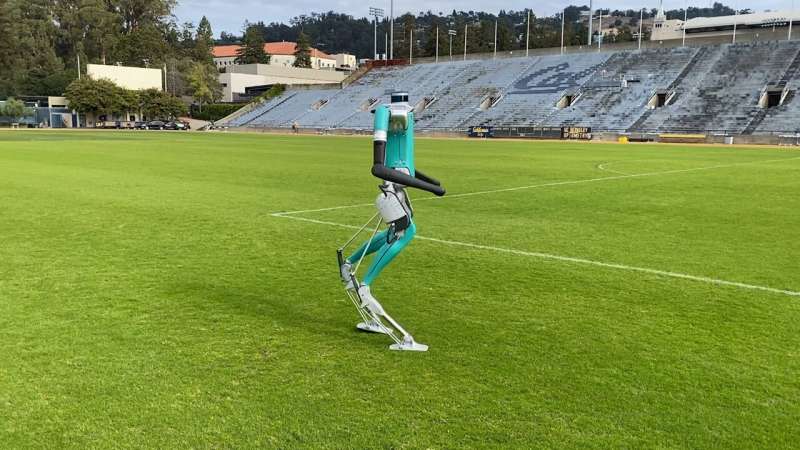April 18, 2024 report
This article has been reviewed according to Science X's editorial process and policies. Editors have highlighted the following attributes while ensuring the content's credibility:
fact-checked
peer-reviewed publication
trusted source
proofread
Using sim-to-real reinforcement learning to train robots to do simple tasks in broad environments

A team of roboticists at the University of California, Berkeley, reports that it is possible to train robots to do relatively simple tasks by using sim-to-real reinforcement learning to train them. In their study, published in the journal Science Robotics, the group trained a robot to walk in unfamiliar environments while it carried different loads, all without toppling over.
Over the past several years, roboticists have used a variety of techniques to train robots to move efficiently and quickly across varied environments. But as the researchers with this new effort note, such robots do not have very many useful applications. They suggest that robots that are able to carry out mundane tasks in a slow but efficient manner would be far more useful. To that end, they have turned to sim-to-real reinforcement learning.
The technique involves training a simulated version of a robot to carry out desired tasks by exposing it to billions of examples in simulated environments. The method also involves using a reward/penalty system as part of the robot's training—if it does something right as it attempts to achieve a goal, it is rewarded by receiving a "1," for example. If it does something wrong, however, it receives a "-1." Over time, it improves its performance as it seeks to up its count of rewards.
The research team used the approach to train a robot called Digit to navigate a path along a sidewalk in an unknown part of a town and to recover after being repeatedly assaulted by a large ball, to overcome a physical restraint, to walk across materials that might cause it to trip, to carry a backpack, to carry a bag of trash to a bin and to use a tote bag to carry personal items around.
The researchers suggest that sim-to-real reinforcement learning could be used to train robots in real-world environments such as the home, office or factory floor. The idea, they note, is to make robots more useful.
More information: Ilija Radosavovic et al, Real-world humanoid locomotion with reinforcement learning, Science Robotics (2024). DOI: 10.1126/scirobotics.adi9579
© 2024 Science X Network


















